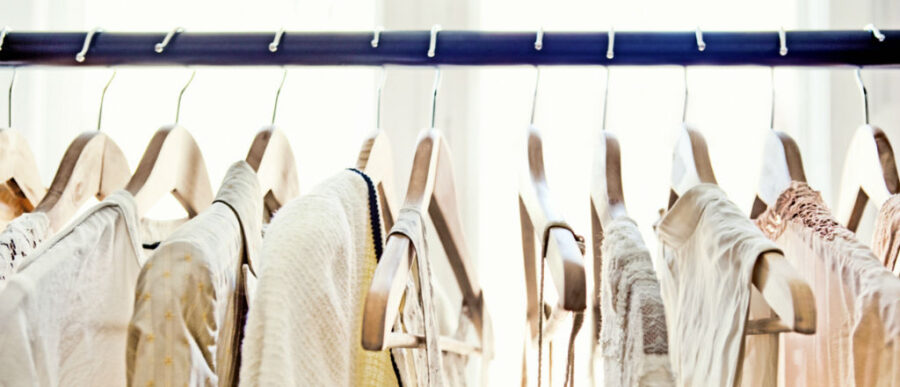When comedian Leslie Jones, who is 6 feet tall, couldn’t find a designer to dress her for the red carpet premiere of Ghostbusters in 2016, she took to Twitter to call out the fashion industry’s bias against larger women. Designer Christian Siriano responded, making her a body-hugging, off-the-shoulder red gown that was in high demand after Jones was photographed from every angle.
Her co-star, Melissa McCarthy, shared a similar struggle finding someone to dress her curves despite her status as bankable TV and box office draw. In 2015, she launched her eponymous clothing line to offer trendy fashions that start at a size 12 and go up.
A number of clothing retailers and manufacturers have followed suit in the last few years, expanding their lines, which once stopped at a size 12 or 14, to include sizes up to a 28. Malls that had few, if any, options for plus-size shoppers a decade ago now offer a veritable bonanza of bigger sizes. Traditional mall stores like Loft, Anthropologie, J. Crew and White House Black Market have extended sizes for the first time in their histories, while larger retailers Walmart, Target, Amazon, Macy’s and Nordstrom are adding more size-inclusive brands to their inventories. The online space has even more plus-size players, including Eloquii, ModCloth, Gwynnie Bee and Dia & Co.
Experts say this shift is the result of economic and social pressure. Plus-size clothing is the fastest-growing segment in apparel and accounts for more than $21 billion, according to market research. More than half of women ages 18 to 65 wears a size 14 or higher, and they’ve been voraciously using social media to exert pressure on retailers and to push back against body-shamers who say there is no room for diverse figures in fashion.
“Consumers are really complaining about this lack of diversity in the fashion industry and are putting pressure on brands to serve a greater variety of customers,” said Lehigh University marketing professor Ludovica Cesareo, who was a post-doctoral graduate fellow at Wharton. “Fashion is such an important part of self-presentation and communicating our identity to others, and, in the past, plus-sized women had such a limited number of identities they could show. I think social media is really putting pressure on companies to have more variety in their lines.”
Cesareo and Thomai Serdari, brand strategist and adjunct marketing professor at New York University’s Stern School of Business, spoke about the burgeoning plus-size market during a segment of the Knowledge at Wharton radio show on SiriusXM. (Listen to the podcast at the top of this page.) They said the shift represents many changes taking place in the apparel industry, from the fitting room to the board room.
“There are many things that have been going wrong in the fashion industry, starting with the fact that this is a male-dominated industry in terms of leadership and in terms of designers,” Serdari said. “So what has been produced over the years for women has been dictated by men and follows some sort of ideal of an ideal woman that is not reflecting the reality and the actual size of women today.”
The professors noted that what is termed the “body positivity movement” is being led by celebrities and social media influencers who are cheering bigger bodies, even if it means facing a fierce backlash from those who contend it promotes unhealthy ideals. Singer-songwriter Lizzo, yoga teacher and writer Jessamyn Stanley, model Ashely Graham, actress Aidy Bryant and comedian Dulce Sloan are some of the stars who use their platforms to advocate for body acceptance.
“It’s really become important for women to be themselves, whatever their form, shape, size or appearance,” Cesareo said.
“It’s really become important for women to be themselves, whatever their form, shape, size or appearance.”–Ludovica Cesareo
Inclusivity is also a hallmark of millennial culture, so younger designers such as Siriano want to cater to different body shapes. The addition of larger sizes has even reached into niche markets, such as lingerie and activewear. Nike and Fabletics, for example, now sell plus-size athleisure items.
“We have seen many more voices and many more opinions and influencers with very high numbers of followers who actually advocate for a more inclusive fashion industry,” Serdari said. “So I think we are moving into the right direction, and social media is allowing this multiplication of voices.”
In Luxury Lines, Size Snobbery Persists
Not every clothing designer is willing to punch a ticket on the plus-size train, however. Luxury brands have always been reluctant to make larger sizes, and couture designers have been blatant in their size discrimination. The late Karl Lagerfeld, who steered the venerated Chanel label for more than 30 years, was an outspoken critic of women’s bodies. He once called singer Adele “a little too fat” and said supermodel Heidi Klum was “too heavy” to walk the runway. In 2009, he criticized readers of a German magazine who demanded to see more “real women” in the pages by saying, “You’ve got fat mothers with their bags of chips, sitting in front of the television and saying that thin models are ugly.”
Size elitism, the professors said, doesn’t appear to be abating anytime soon in the luxury segment.
“There is some movement in the industry,” Cesareo said. “But, unfortunately, there is this old-fashioned snobbery that high-end luxury brands are serving a certain type of customer. And I’m not sure they’re really ready to move away from that.”
“What has been produced over the years for women has been dictated by men and follows some sort of ideal.”–Thomai Serdari
Serdari agreed. “Yeah, it’s a very elitist industry. The idea of who the customer is, is a woman who doesn’t need to work, who is not stressed out, who has people taking care of her, has a perfect nutritionist, has time to go to the gym, and therefore she can be a size 0 to 4 — nothing else will do. And that’s exactly the type of elitism that is still prevalent in high fashion,” she said.
In addition to culture, cost is a factor in why some luxury and other brands won’t offer extended sizes. It is expensive to create patterns beyond the sample size or to adapt clothing features, such as sleeves or skirt length, to accommodate fuller figures. But the professors expect that technology will help mitigate those costs in the future.
“I think as technology allows us to do more personalization and customization … we may actually be able to see a much more tailor-fitted garment that is being produced for me, for my body type and my size and that fits me,” Serdari said. “We’re not there yet, but I think that within five years, we can see a lot of things happening in the industry.”
Siriano has acknowledged the higher costs in translating patterns, but he said it is worth it: Adding plus sizes tripled his business.
“The whole point of being a designer is to make people feel good,” he said to Elle magazine. “We’re here to make people look cute in a dress. You want to look cute in a dress and you’re a size 26? Why not?”



